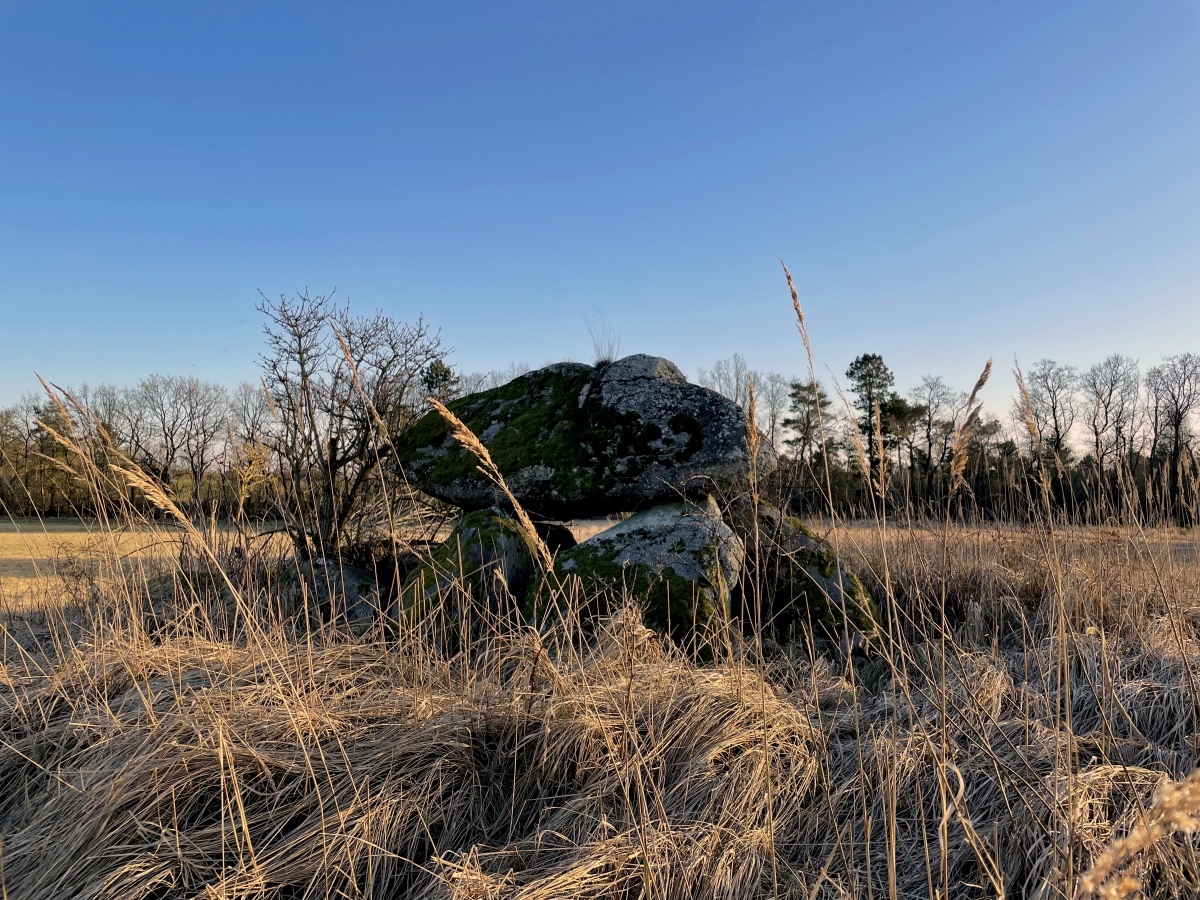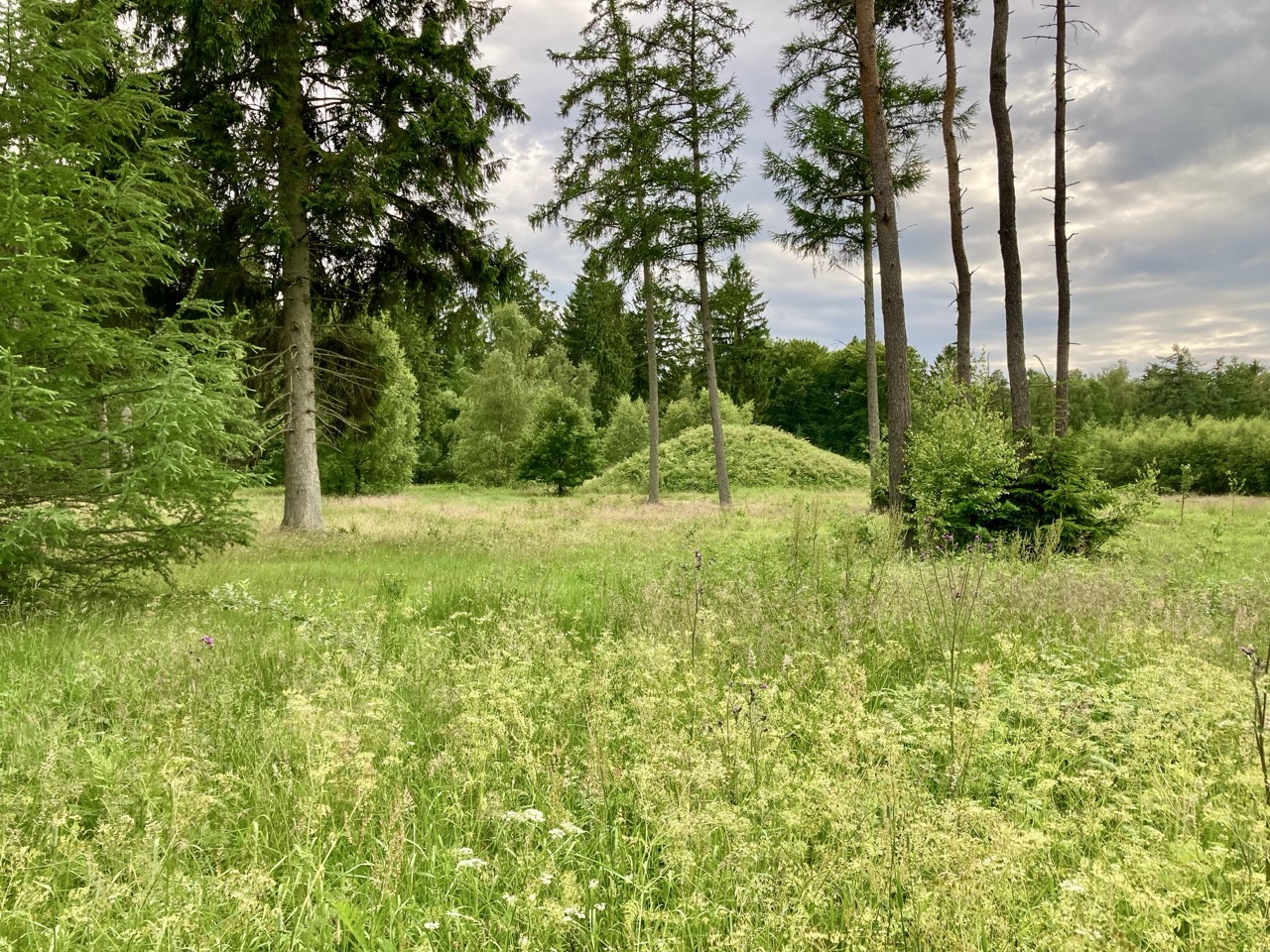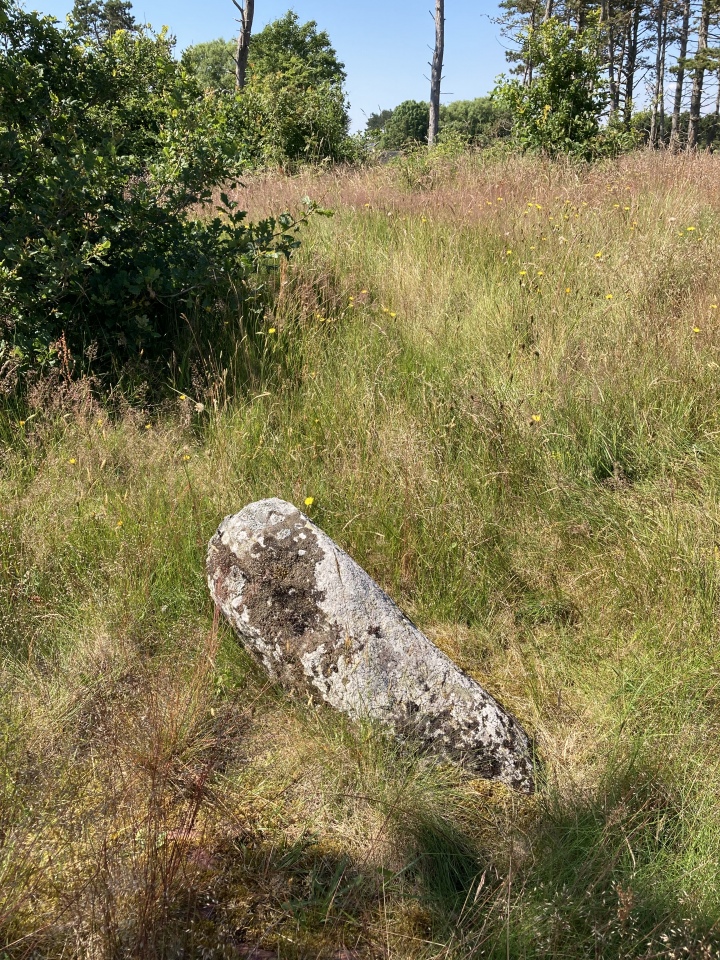Contributory members are able to log private notes and comments about each site
Sites Vishap has logged. View this log as a table or view the most recent logs from everyone
Østerballe Runddysse
Date Added: 22nd Mar 2025
Site Type: Burial Chamber or Dolmen
Country: Denmark (Midtjylland)
Visited: Yes on 19th Mar 2025. My rating: Condition 4 Ambience 5 Access 3

Østerballe Runddysse submitted by Vishap on 22nd Mar 2025. Osterballe runddyse from the north east. Saw this for the first time from the bus window coming home from Grenaa, far out in a field on a little knoll; a distant island choked with weeds and crowned with stone. Finally came back to investigate - thanks to the coordinates supplied here - with my wife and daughter on a warm and cloudless March afternoon. The site was more overgrown than when we'd first spied it from the bus, and we drove back and forth along the country road trying to find it: it ...
(View photo, vote or add a comment)
Log Text: Saw this for the first time from the bus window coming home from Grenaa, far out in a field on a
little knoll; a distant island choked with weeds and crowned with stone. Finally came back to investigate - thanks to the coordinates supplied here - with my wife and daughter on a warm and cloudless March afternoon. The site was more overgrown than when we'd first spied it from the bus, and we drove back and forth along the country road trying to find it: it was my eagle-eyed 7-year old Ivarsha who finally spotted it. What a joy to behold it up close, a beautiful specimen that glowed in the slanted light of the last winter sun.
Proud to contribute the first photos to TMP, courtesy of my wife, Alina.
Mogenstrup Jættestue
Date Added: 22nd Jun 2025
Site Type: Passage Grave
Country: Denmark (Midtjylland)
Visited: Yes on 22nd Jun 2025. My rating: Condition 5 Ambience 4 Access 4

Mogenstrup Jættestue submitted by Vishap on 22nd Jun 2025. The passage grave as seen off the paved road for golf carts...
(View photo, vote or add a comment)
Log Text: This reconstructed Jættestue, hidden in plain sight just south of the Nimtofte river in a lush woodland on a golf course, was a wonderful surprise. The site is very well maintained, as you might expect, being on the grounds of a very swank golf course (brings memories of the Octogon Earthworks of the Hopewell Indians in Newark, Ohio, a world away).
The passage grave doesn't seem to be very well known - hardly a word of it online, and no pictures. We had no idea what to expect. I wonder how many golfers take the time to venture within...? Thanks to The Megalithic Portal having a record of it and a link to the kulturarv.dk directory, we finally visited, and had a wonderful experience.
Here's a translation of text from 1886, when the site was first documented by the Danish National Museum, and the latest notes from 2007, after it was restored:
1886 Museum trip
National Museum, Danish Department, Danish Antiquity
In a stretch of quicksand and partly covered by quicksand there is a 12'9" long and 7' wide chamber, the longitudinal direction of which is from S to N. The chamber has two huge lintels, of which the one towards the north has lost large pieces by blasting. Here are 8 whole and upright bearing stones, as well as one that has fallen and blasted (b [on drawing]). The passage is covered with a lintel and faces east. As the drawing shows, it is further outward, being 2'9" at the outermost point; but between the bearing stones it is only 1'5". The passage lies somewhat askew in front of the chamber. The entire chamber is filled with sand so that there is only a 2' high space under the lintel. Stone a [on the drawing] is a broken piece that has fallen into the chamber. Piece b [on the drawing] is in all probability a piece of the bearing stone that has closed the 4' large hole in which it now lies. All the stones are of an unusual size. It seems that there has been a round rim of large stones around here, and that the outermost of the bearing stones of the passage have reached the circumference. The tops of two curbstones are seen to the north. Although the surroundings are stone-free, one can still see a quantity of larger and smaller hand stones in the building of the mound, where it is then visible; for it is for the most part covered with added fly sand, and looks somewhat worn away. Only the lintel, one of which is 10'8" long and 5' wide and the other 8' long and 5' wide and very thick, giving the Memorial some visibility. The Memorial is protected. Vegetation: 1980: Coniferous scrub/trees"
"2007 Museum restoration
Journal no.: NM 2014-021473 (NM 8333/03-32, NM 8333/03-7)
National Museum, Department of Antiquity and the Middle Ages
One of the capstones and the keystone of the giant's chamber were removed. Two of the chamber's bearing stones were secured by installing stainless steel spindles. A fallen sill stone was re-erected and secured with steel spindles. A further added and an original sill stone were secured with steel spindles. The giant's chamber's passage, whose outer four pairs of bearing stones had been removed in recent times, was restored with four pairs of added bearing stones, set in the stone grooves and secured with steel spindles, as well as added capstones. A fragment of the keystone was secured with two steel brackets, after which the keystone was replaced. The lifted capstone was also replaced. The middle capstone was weakened after a partial split and was secured with a steel bracket. A missing capstone was replaced with a supplied stone. The Jættestuen was packed with stone and crushed flint and covered with stable gravel. A bentonite membrane and a layer of sand were placed over this. Rolled grass was placed on top. The floor in the Jættestuen chamber and hallway was cleared of fallen high fill and covered with a 10 cm thick layer of clean sand. The dry stone walls of the Jættestuen were restored. Missing dry stone walls were replaced with new ones. See report."
Boeslum Langdysse
Date Added: 26th Jun 2024
Site Type: Long Barrow
Country: Denmark (Midtjylland)
Visited: Yes on 26th Jun 2024

Boeslum Langdysse submitted by Vishap on 26th Jun 2024. From the top of the barrow. A stone sunken in a depression.
(View photo, vote or add a comment)
Log Text: Finally had a chance to visit this site, as we often go to the wonderful beach nearby. Thanks to the megalith pocket guide app - and the contributor who uploaded the co-ordinates (and alerted us to its existence in the first place) - we were able to locate it easily enough: that said, there is very little to see in terms of megalithic remains. Given its description as a langdysse, or long barrow, perhaps this is an earlier, Barkaer-type timber-based structure, modeled on the longhouse. The mound is overgrown and surrounded by dense vegetation. No kerbstones were visible, but there is a depression on the top of the mound, with a stone (cap-stone?) half-sunken inside it.
So, not a site for casual enthusiasts. But for anyone who knows this area, it is as always a joy to meditate on the nature of this site, and to imagine the neolithic past in this very beautiful place, on the shore of the Kattegat sea. As is typical with such monuments, it was built near the water - the dramatic islet of Helm (inspiration for Tolkien's Helm's Deep), can be seen nearby.
